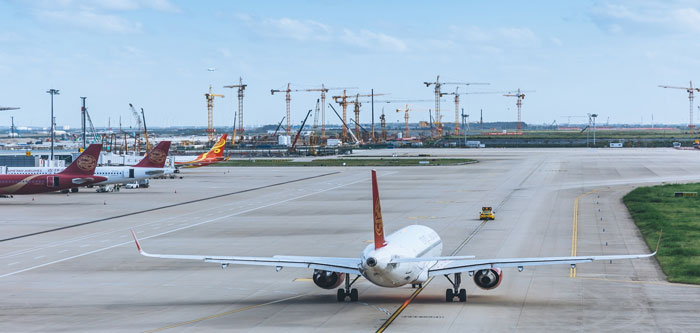China is a wonderful and exciting country, full of history, culture, sights, and sounds. For many first-time travelers, visiting China can be both highly anticipated, and a bit overwhelming. Between the differences in language, culture, and government than what most Westerners are used to, it can all be a bit confusing and a little intimidating! This brief guide for first-time visitors to China offers advice on planning, paperworks, key areas that are popular to visit, sights to see, and more.
Planning Your Visit
Like many things in life, the first and often most important part to ensure a good outcome is having a good plan. The Internet has a wealth of information on everything to do with travel to China, and first-time travelers are encouraged to spend a good deal of time reading up on both the tedious things, like rules and regulations, and the more exciting things, like places to go and things to see.
China is a huge country, and as much as first-time visitors may want to see everything, it’s just not going to be possible (unless you have many weeks for your visit). Therefore, careful planning, to know what area to visit first, second, third, etc., and maximize the number of sights you can see, if usually the best advice.
Online research is also valuable for planning when to go, as often there are promotional deals from many travel agencies, tour groups, and hotels during less-popular seasons, which can be especially useful if you are trying to plan a vacation on a budget.
Passports and Visas
To enter through customs or at most ports of entry, in China or elsewhere, you will need a valid passport from your home country. Most countries provide information on how to obtain a passport on their various government websites. Travelers are advised to ensure at least 6 months or more are left on their passport (before the expiration date) before traveling, as many countries require a certain amount of buffer time, or will not allow you to be admitted. In China’s case, most ports require at least 3 months of validity after the date of entry in order to allow lawful entry.
Visas are also required for most travel in China. There are some circumstances and regions where traveling without a visa is allowed under certain circumstances, and these programs are growing progressively larger, but still make up a minority of destinations and travel itineraries. First-time travelers are encouraged to apply for visas based on where they intend to go, regardless, just to be on the safe side. While there are some fees associated with this process, it’s a small price to pay to be confident you’ll be able to go where you want to go on your trip!
There are many helpful sites on the internet that can tell you more about traveling without a visa, or what the visa requirements are for different locations, cities, provinces, or regions of China. These vary based on your country of origin and travel itinerary, and can take some time to work out in advance, so be sure to plan ahead, and check with your travel agent, tour group, or embassy for the latest requirements and details.
Popular Tourist Regions and Attractions
Almost all of China is a place of wonder and diversity that is worth seeing. However, some of the key tourist areas and the main sights to see in each area, include:
- Beijing, on the north-east coast, is the capital city and has been so for the past 800 years. Many of the historic sites to see in China are located in and around Beijing, including the Forbidden City, Temple of Heaven, Summer Palace, and accessible tourist sections of the Great Wall.
- Shanghai, on the central east coast, is the largest single city in China. With over 70 historical sites, many culture centers and thousands of restaurants, Shanghai is less imposing than many cities that are much smaller in size and has a vibrant tourism industry today.
- Xi’an, in central China, is home to the famed Terracotta Warriors, as well as multiple historical sites, museums, and cultural points of interest.
- Guilin, in south-central China, offers a contrast from the above locales, with a more scenic and rural setting. Rivers, mountains, caves, and wildlife intermingle with plenty of history and opportunities for food, shopping, and culture.
- Hong Kong, off the southern central coast of China, is another top destination. Though returned to China by the British in modern times, Hong Kong retains a mix of Chinese and British influences and is worth seeing, if for no other reason than the architecture, shopping, and other modern amenities.
This list barely scratches the surface, as China spans an area of 3.7 million square miles, making it slightly larger than the collective area of the United States (including Alaska). If this seems intimidating, it might be worthwhile to look at tour groups or travel agencies, who often run various length planned travel programs, typically 7 to 14 days long, that give you a chance to see the best of the best.
Additional Tips and Information
Some additional tips and information that may help in your travels include:
- Be sure to have a translation dictionary or, better yet, a smartphone app that allows for translation. However, in many areas, especially those that are heavily trafficked by tourists, many people speak passable English, especially those who are in tourist-service jobs like drivers, hotel employees, etc.
- Make sure you are aware of local laws when traveling, to avoid running afoul of law enforcement or the local judicial system.
- Remember when you are traveling you are a guest in another country, so good manners and good behavior can go a long way to making your trip more enjoyable.
- Don’t forget to take lots of pictures or videos if you want (where permitted), but be sure to not get too hung up behind a lens – enjoying the experience and being in the moment is far more important than how a picture might look later on when you post it on social media!


